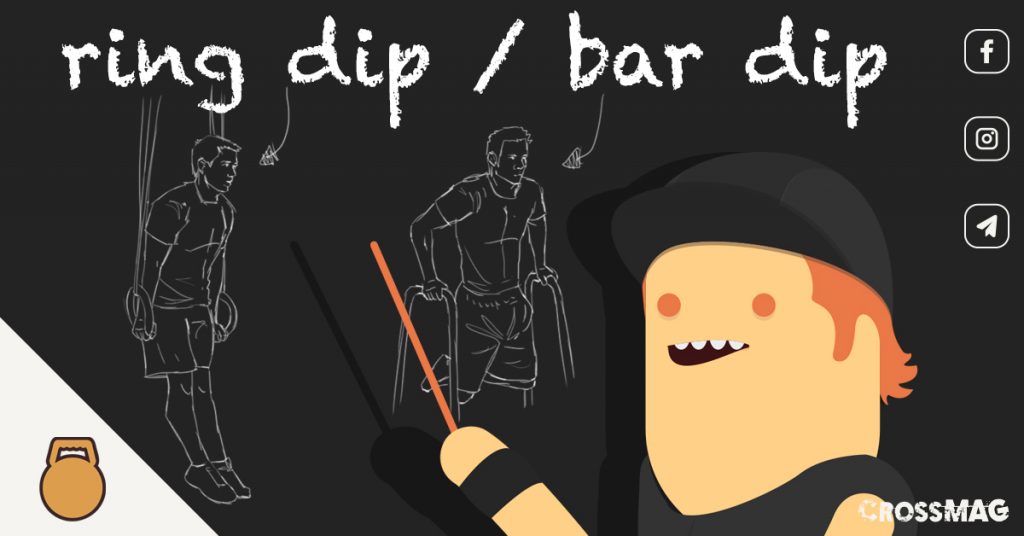They look the same, but they are not.
We are talking about… a bit of all the variations of the exercises.
Like there is always the one who comes to the weight room and says: barbell squat? It doesn't exist: I make them at the multipower. They are both the same.
Here. If it were up to me, I would rip them off the gym membership from people like that.
With dip - the classics at parallel bars, or to the rings - the question is more subtle. And no, they are not really the same exercises.
Index
The most obvious difference between ring dip and bar dip?
This is easy: stability.
Or rather: instability.
Not to mention the core, which must be (it is appropriate to say it) a steel core.
Be a beginner to the rings, but sniff fifty dip with parallel overload without problems? It doesn't matter: in the beginning, the ones that you will tire - and that will slow down your performance - are precisely the stabilizing muscles.
Yeah: that's why ring dip, ring dip, is more difficult for a beginner to learn.
Having said that, both exercises actually have an important place in training routines.
What do I do for the mass?
Both.
But there's a problem. Generally, to "make mass", that is to reach the hypertrophic phase of a muscle, you have to do high repetitions (maybe to exhaustion) for a good number of series. Let's say 12-15 reps for 3-5 sets.
If you do them, both exercises are fine. The fact remains that it will generally be more difficult to make them to the rings: you want it because we all learn to make dip bars first, you want it because we are not used to the instability of the rings.
We can make a similar speech for the live weather. Doing the dip on the rings requires slower movements, which in turn keep muscles tense longer. This is also one of the optimal conditions for generating force.
What if I'm in a hurry?
Because the bars take the “adapt to stabilization” variable out of the equation. You can thus focus on muscle work: pectorals, triceps and shoulders. And grind dip like there was no tomorrow, first tiring the target muscles and not the stabilizers.
To become strong: which dip do I do?
There is no doubt: if you want to be strong, the ring dip have an extra gear. The reason? Control, coordination, core and shoulder strength (for stabilization) are the factors that make it necessary to be stronger to perform the ring dip as it should be.
Not only. Traditional shoulder strength exercises only train the pushing movement (think slow, the overhead press). The ring dip train the shoulder from a point of view (also) of stability.
Excellent: it is the best of the preventions of the injuries, because the shoulder joint is trained to move in all possible planes of movement.
So the dip bars aren't good for strength?
Far from it: dip bars are also great for working on direct force, because
- allow you to focus on movement, simplifying it
- they are easy to overload
Conclusions: better bar dip or ring dip?
You will have understood: they are both excellent exercises.
My advice? Grind bar dip like a locomotive, overloading them. Do it with more than good technique (your shoulders will thank you). Do it in the two variants of the dip bars: with focus on the triceps, and with pectoral focus.
In the meantime, make friends with the rings, and study the ring dip.
Juri Chechi's poster is fundamental.
Last tip: we have activated a lot of discounts on Amazon: from 30 to 70% on all sports categories! It's all on our dedicated channel ????
SUBSCRIBE HERE TO THE TELEGRAM CHANNEL

